python matplotlib,,import mat
python matplotlib,,import mat
import matplotlib as mplmpl.get_backend()# ‘nbAgg‘import matplotlib.pyplot as plt
plt.plot(3,2,‘.‘)
作图 :
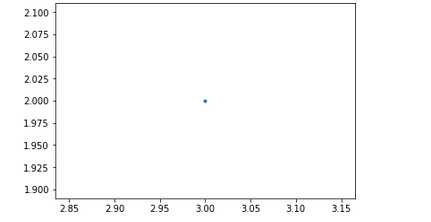
from matplotlib.backends.backend_agg import FigureCanvasAggfrom matplotlib.figure import Figurefig = Figure()canvas = FigureCanvasAgg(fig)ax = fig.add_subplot(111)ax.plot(3, 2, ‘.‘)canvas.print_png(‘test.png‘)##notebook 中用html显示图片
%%html<img src = ‘test.png‘/>
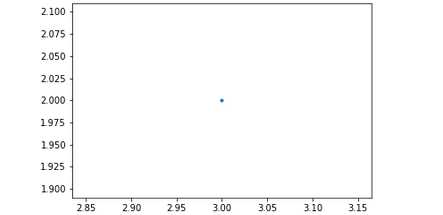
2. 用plt.gca()用法
plt.figure()plt.plot(3, 2, ‘o‘)ax = plt.gca()ax.axis([0,6,0,10])
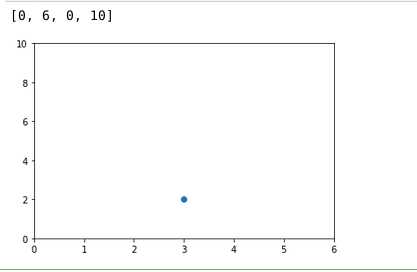
plt.figure()plt.plot(1.5,1.5,‘o‘)plt.plot(2,2,‘o‘)plt.plot(2.5,2.5,‘o‘)
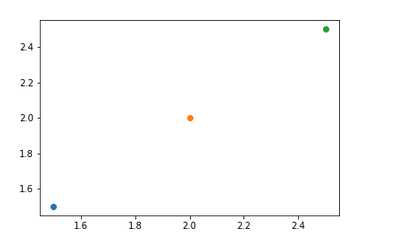
3. Scatterplot()
import numpy as npx = np.array([1,2,3,4,5,6,7,8])y = xplt.figure()plt.scatter(x,y)
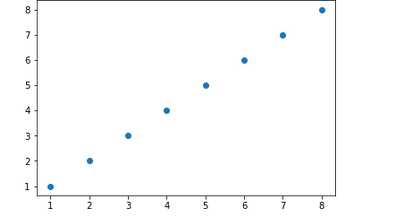
import numpy as npx = np.array([1,2,3,4,5,6,7,8])y = xcolors = [‘green‘]*(len(x)-1)colors.append(‘red‘)plt.figure()plt.scatter(x,y,s=100, c=colors) #s为scatter 点的size
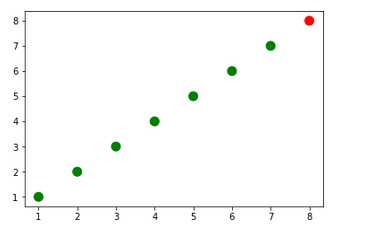
zip()
zip_generator = zip([1,2,3,4,5],[6,7,8,9,10])list(zip_generator)"""output: [(1, 6), (2, 7), (3, 8), (4, 9), (5, 10)]"""
zip_generator = zip([1,2,3,4,5],[6,7,8,9,10])#unpack this result into two variables directly ,x ans yx,y = zip(*zip_generator) print(x)print(y)#output:# (1, 2, 3, 4, 5)# (6, 7, 8, 9, 10)#
散点图画法
plt.figure()plt.scatter(x[:2], y[:2], s=100, c=‘red‘, label=‘Tall students‘)plt.scatter(x[2:], y[2:], s=100, c=‘blue‘, label =‘Short student‘)plt.xlabel(‘The number of times the child kicked a ball‘)plt.ylabel(‘The grade of the student‘)plt.title(‘Relationship between ball kicking and grades‘)plt.legend()plt.legend(loc=4, frameon=False, title=‘Legend‘) #右下角
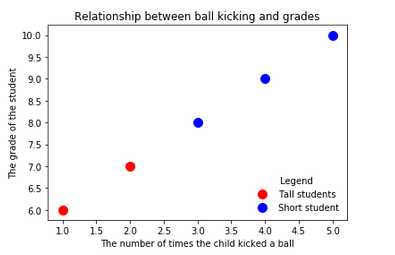
4. Linear plot
import numpy as nplinear_data = np.array([1,2,3,4,5,6,7,8])quadratic_data = linear_data**2plt.figure()plt.plot(linear_data, ‘-o‘, quadratic_data, ‘-o‘)plt.plot([22,44,55], ‘--r‘)plt.xlabel(‘Some data‘)plt.ylabel(‘Some other data‘)plt.title(‘A title‘)plt.legend([‘Baseline‘, ‘Competition‘, ‘Us‘])#fillplt.gca().fill_between(range(len(linear_data)), linear_data, quadratic_data, facecolor=‘blue‘, alpha = 0.25)
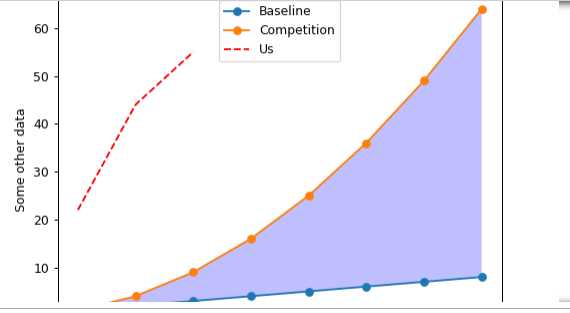
plt.figure()observation_dates = np.arange(‘2017-01-01‘, ‘2017-01-09‘, dtype=‘datetime64[D]‘)plt.plot(observation_dates, linear_data, ‘-o‘, observation_dates, quadratic_data,‘-o‘)
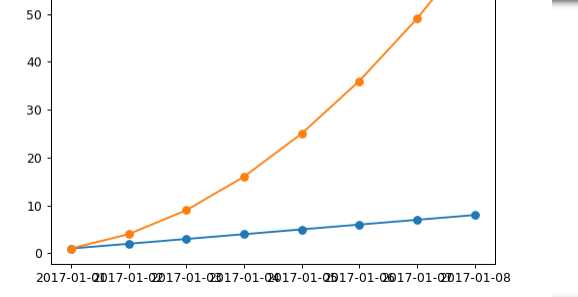
plt.figure()observation_dates = np.arange(‘2017-01-01‘,‘2017-01-09‘, dtype=‘datetime64[D]‘)observation_dates = list(map(pd.to_datetime, observation_dates))plt.plot(observation_dates, linear_data, ‘-o‘, observation_dates, quadratic_data, ‘-o‘)x = plt.gca().xaxisfor item in x.get_ticklabels(): item.set_rotation(45) #旋转一定的角度 plt.subplots_adjust(bottom=0.25) #调整与底部的距离ax = plt.gca()ax.set_xlabel(‘Date‘)ax.set_ylabel(‘Units‘)ax.set_title(‘Quadratic vs. Linear performance‘)ax.set_title(‘Quadratic ($x^2$) vs. Linear ($x$) performance‘ ) #Latex
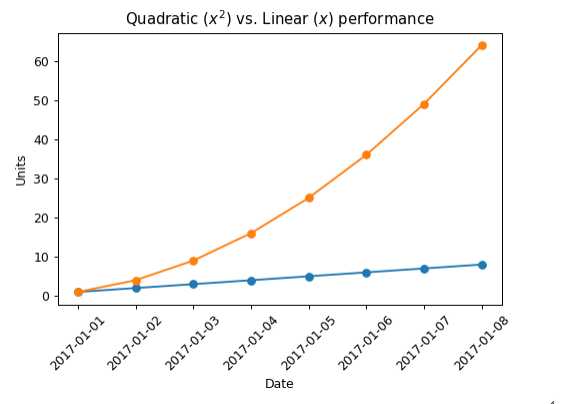
5 . Bar chart
plt.figure()xvals = range(len(linear_data))plt.bar(xvals, linear_data, width=0.3)new_xvals = []for item in xvals: new_xvals.append(item+0.3)plt.bar(new_xvals, quadratic_data, width=0.3, color=‘red‘)from random import randintlinear_err = [randint(0,15) for x in range(len(linear_data))]plt.bar(xvals, linear_data, width=0.3, yerr = linear_err)
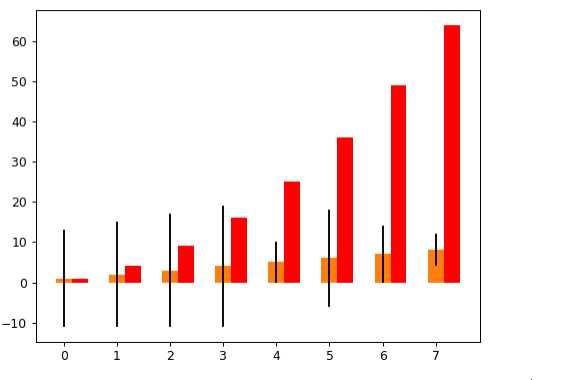
plt.figure()xvals = range(len(linear_data))plt.bar(xvals, linear_data, width=0.3, color=‘b‘)plt.bar(xvals, quadratic_data, width=0.3, bottom = linear_data,color=‘r‘)
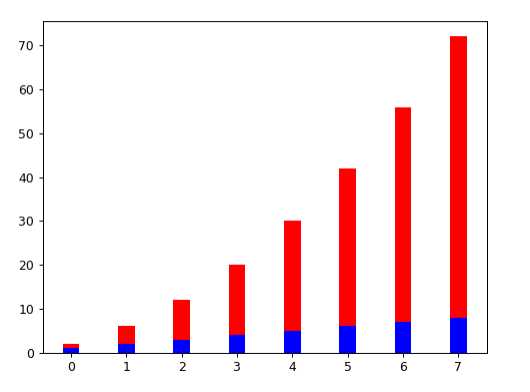
plt.figure()xvals = range(len(linear_data))plt.barh(xvals, linear_data, height=0.3, color=‘b‘)plt.barh(xvals, quadratic_data, height=0.3, left=linear_data, color=‘r‘)#垂直变水平
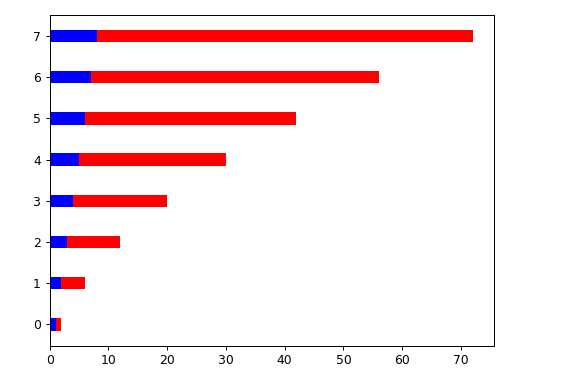
python matplotlib
评论关闭